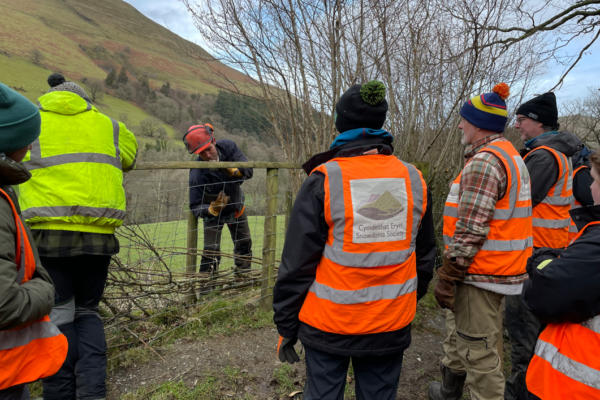Nature Recovery in Snowdonia
National Parks are well-placed to restore nature, if equipped for the job.
We know nature is in trouble.
We don’t have all the evidence we’d like, but we have enough.
We press governments for urgent action.
Governments respond with strategies or funding programmes.
The responses are poorly targeted, lack clarity of ambition, are under-resourced or too short-term.
Nature continues to struggle.
In protected sites the declines are slower, but they are still declines.
In the wider countryside things are worse.
This, sadly, is a loop we’ve been round a number of times now.
We need to break out of it.
There is a lot of interest in a global initiative referred to as 30×30, which aims to secure 30% of land and sea under protection for nature by 2030.
At least 90 countries have signed up to this commitment. At the UK level it looks as though that commitment will be met by including designated landscapes as protected areas. In Wales National Parks and AONBs cover some 25% of the land area, so achieving 30% by 2030 looks easily doable. But what matters for Snowdonia of course is Welsh Government’s approach. Climate Change Minister Julie James confirmed Wales’ commitment to 30×30 in October 2021 (https://record.assembly.wales/Plenary/12455#A67620) whilst acknowledging the consequences of the loss of EU funding for nature restoration.
 There’s no doubt that designated landscapes contribute a great deal of protection in terms of landscape and cultural heritage. The problem is that designated landscapes are not currently delivering nature recovery overall – some outstanding people and projects are delivering results but they are the exception rather than the rule . A recent report from the British Ecological Society (link below) highlights the problem:
There’s no doubt that designated landscapes contribute a great deal of protection in terms of landscape and cultural heritage. The problem is that designated landscapes are not currently delivering nature recovery overall – some outstanding people and projects are delivering results but they are the exception rather than the rule . A recent report from the British Ecological Society (link below) highlights the problem:
‘Sites designated as protected landscapes (including National Parks and Areas of Outstanding Natural Beauty) present unique opportunities for biodiversity in the UK. Given that they encompass a wide range of habitats and environmental conditions, their contribution to nature’s recovery and society more generally could be immense. Protected landscape authorities have excellent relationships with people who own and work the land, which means change could be rapid, given adequate resourcing. However, until significant reform is delivered, this category of protected area should not be automatically included in the 30×30 target . This is because, while these areas may provide some biodiversity benefits, they do not necessarily deliver for nature in the long term in their totality. This is in no small part the result of chronic under-resourcing for actions on the ground, despite people who work for relevant authorities being passionate about nature.’
We don’t need to change the purposes of designated landscapes. We don’t need new legislation. We probably don’t even need massive structural reform. Those routes all take too long. We don’t have the luxury of time. What is needed is to make nature recovery a clear priority and to resource this work as if life depended on it. Because of course it does.
even need massive structural reform. Those routes all take too long. We don’t have the luxury of time. What is needed is to make nature recovery a clear priority and to resource this work as if life depended on it. Because of course it does.
We’ve seen signs of the leadership required in Welsh Government’s work on transport – we now need the same ambition applied so that designated landscapes can deliver on their enormous nature restoration potential. We’ll be doing our bit to move this agenda forward.
Protected Areas and Nature Recovery Report: https://www.britishecologicalsociety.org//wp-content/uploads/2022/04/BES_Protected_Areas_Report.pdf








